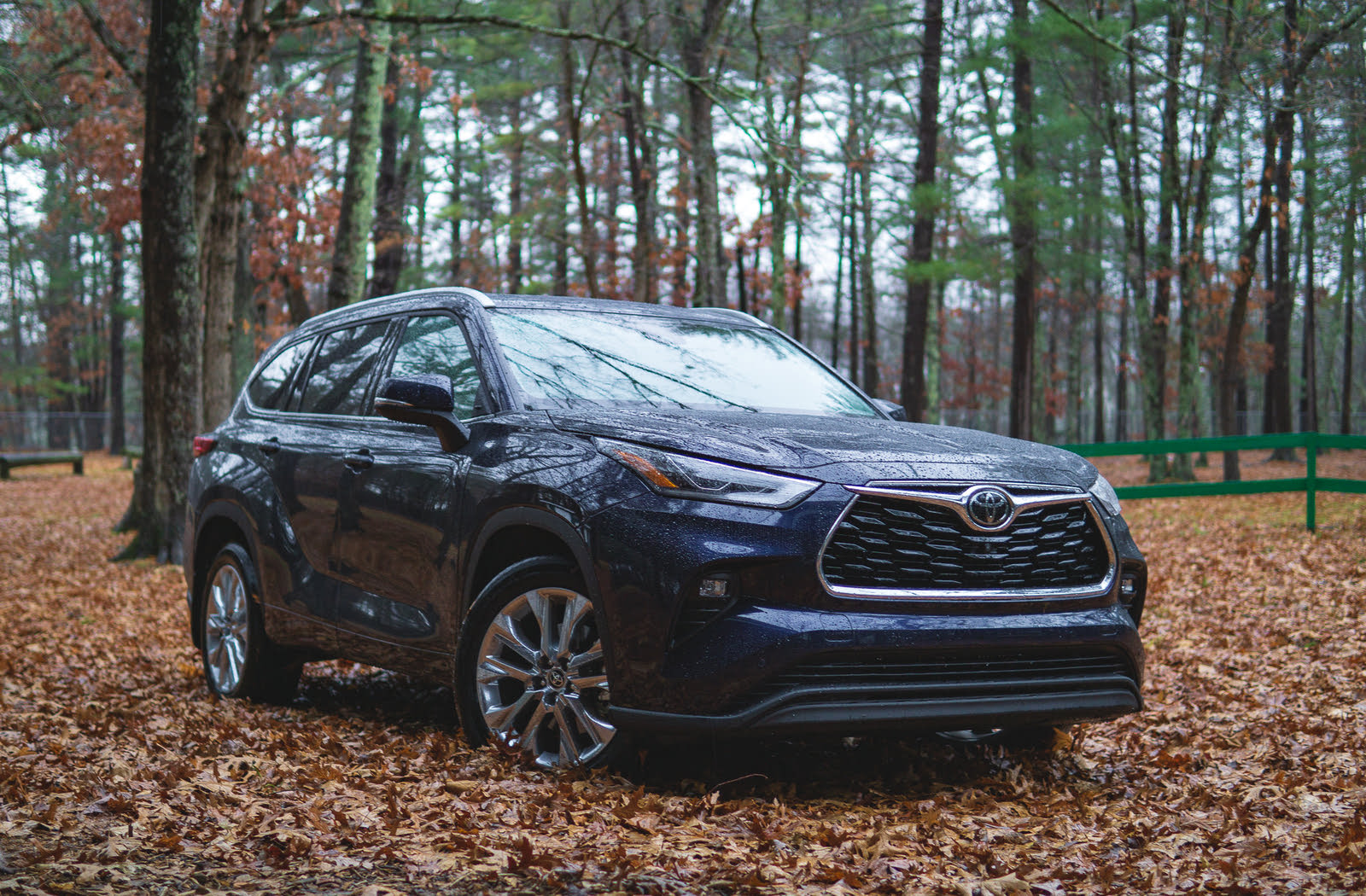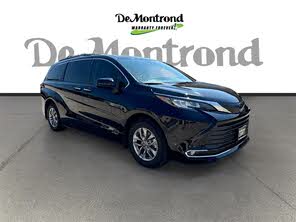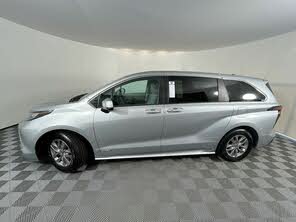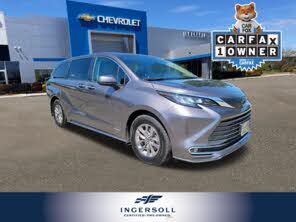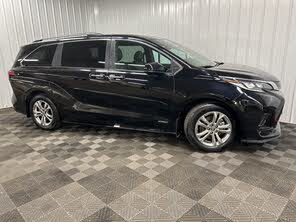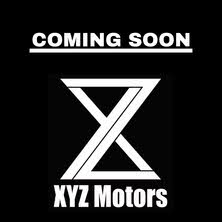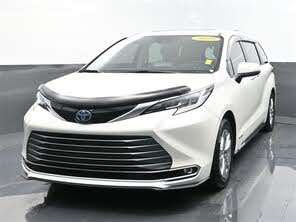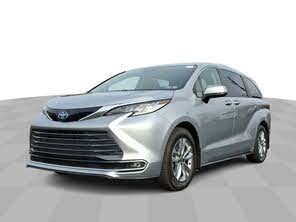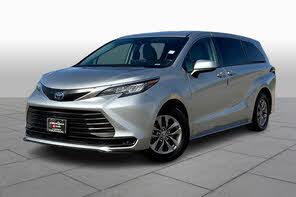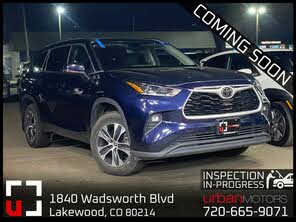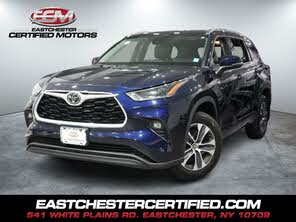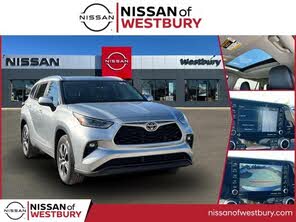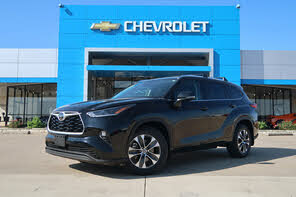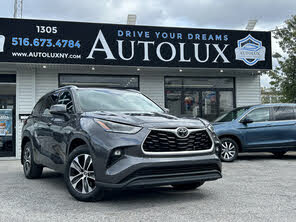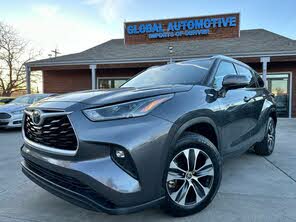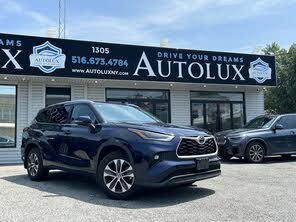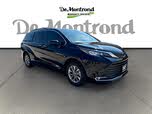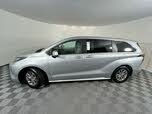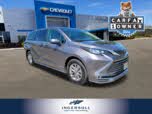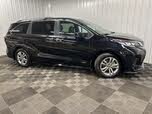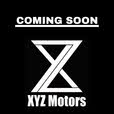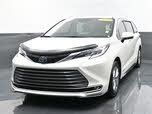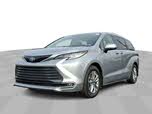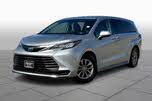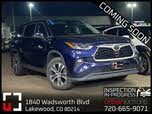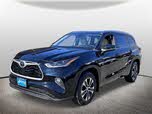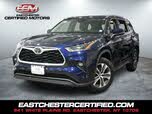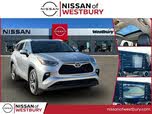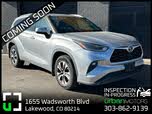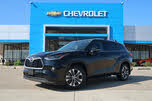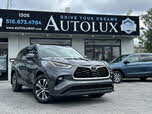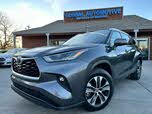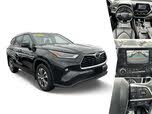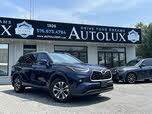2021 Toyota Sienna vs 2021 Toyota Highlander
Overview | |
MSRP$34,460 | MSRP$35,085 |
Average price$38,573 | Average price$32,855 |
Listings897 | Listings2025 |
Ratings & Reviews | |
User Reviews | User Reviews |
Expert reviews8.3 out of 10 | Expert reviews7.5 out of 10 |
Pros
| Pros
|
2021 Toyota Sienna Reviews SummaryToyota’s minivan got a major makeover for 2021, now entering its fourth generation of production since debuting as a 1997 model. For the first time, the Sienna gets a hybrid gasoline-electric powertrain, and not only that—it’s standard equipment. The Sienna Hybrid is built on the Toyota New Global Architecture (TNGA-K) platform, shared with the Highlander and other current Toyota models. | |
2021 Toyota Highlander Reviews SummaryToyota hardly needs any help selling three-row Highlanders. It already sits close to the top of the sales charts for its segment, and few vehicles carry the name recognition as the Highlander, which enters into its 20th year of production. But the three-row marketplace is a competitive one, and even after a 2020 redesign, Toyota would be foolish to rest on its laurels. As such, the Highlander enters this year with additional safety-feature technology listed as standard equipment. | |
Popular Features & Specs | |
Engine2.5L 245 hp I4 Hybrid | Engine3.5L 295 hp V6 |
Drive TrainFWD | Drive TrainFWD |
Seating Capacity8 | Seating Capacity8 |
Horsepower | Horsepower295 hp @ 6600 rpm |
EV Battery Capacity1.9 kWh | EV Battery Capacity |
MPG City36 | MPG City20 |
MPG Highway36 | MPG Highway28 |
Engine | |
Engine Name2.5L 245 hp I4 Hybrid | Engine Name3.5L 295 hp V6 |
Torque | Torque263 lb-ft @ 4700 rpm |
Horsepower | Horsepower295 hp @ 6600 rpm |
DrivetrainFWD | DrivetrainFWD |
Fuel Economy | |
EV Battery Capacity1.9 kWh | EV Battery Capacity |
MPG City36 | MPG City20 |
MPG Highway36 | MPG Highway28 |
Interior | |
Seating Capacity8 | Seating Capacity8 |
Safety | |
Front Crash Overall4 | Front Crash Overall4 |
Side Crash Overall5 | Side Crash Overall5 |
Dimensions & Capacity | |
Cargo Space33.5 cu ft | Cargo Space16.0 cu ft |
Curb Weight4610 lbs | Curb Weight4145 lbs |
Height68.5 in | Height68.1 in |
Length203.7 in | Length194.9 in |
Width78.5 in | Width76.0 in |
Wheelbase120.5 in | Wheelbase112.2 in |
Maximum Payload1560 lbs | Maximum Payload1685 lbs |
Number of doors4 | Number of doors4 |
Maximum Towing Capacity3500 lbs | Maximum Towing Capacity5000 lbs |
Overview | ||
MSRP | $34,460 | $35,085 |
Average price | $38,573 | $32,855 |
Listings | ||
Ratings & Reviews | ||
User reviews | ||
Expert reviews | 8.3 out of 10Read full review | 7.5 out of 10Read full review |
Pros & cons | Pros
| Pros
|
Summary | Toyota’s minivan got a major makeover for 2021, now entering its fourth generation of production since debuting as a 1997 model. For the first time, the Sienna gets a hybrid gasoline-electric powertrain, and not only that—it’s standard equipment. The Sienna Hybrid is built on the Toyota New Global Architecture (TNGA-K) platform, shared with the Highlander and other current Toyota models. | Toyota hardly needs any help selling three-row Highlanders. It already sits close to the top of the sales charts for its segment, and few vehicles carry the name recognition as the Highlander, which enters into its 20th year of production. But the three-row marketplace is a competitive one, and even after a 2020 redesign, Toyota would be foolish to rest on its laurels. As such, the Highlander enters this year with additional safety-feature technology listed as standard equipment. |
Video | ||
Popular Features & Specs | ||
Engine | 2.5L 245 hp I4 Hybrid | 3.5L 295 hp V6 |
Drive Train | FWD | FWD |
Seating Capacity | 8 | 8 |
Horsepower | 295 hp @ 6600 rpm | |
EV Battery Capacity | 1.9 kWh | |
MPG City | 36 | 20 |
MPG Highway | 36 | 28 |
Engine | ||
Engine Name | 2.5L 245 hp I4 Hybrid | 3.5L 295 hp V6 |
Torque | 263 lb-ft @ 4700 rpm | |
Horsepower | 295 hp @ 6600 rpm | |
Drivetrain | FWD | FWD |
Fuel Economy | ||
EV Battery Capacity | 1.9 kWh | |
MPG City | 36 | 20 |
MPG Highway | 36 | 28 |
Interior | ||
Seating Capacity | 8 | 8 |
Safety | ||
Front Crash Overall | 4 | 4 |
Side Crash Overall | 5 | 5 |
Dimensions & Capacity | ||
Cargo Space | 33.5 cu ft | 16.0 cu ft |
Curb Weight | 4610 lbs | 4145 lbs |
Height | 68.5 in | 68.1 in |
Length | 203.7 in | 194.9 in |
Width | 78.5 in | 76.0 in |
Wheelbase | 120.5 in | 112.2 in |
Maximum Payload | 1560 lbs | 1685 lbs |
Number of doors | 4 | 4 |
Maximum Towing Capacity | 3500 lbs | 5000 lbs |
The 2021 Toyota Sienna made strides to redefine the image of the minivan. Despite the general perception of minivans as utilitarian and outdated, Toyota's designers endeavored to give the Sienna a more modern, SUV-like appeal. The wide grille pronounced its width, accompanied by sleek, horizontally arranged LED headlamp arrays, which integrated seamlessly into a panel featuring Toyota’s emblem. From the side, the Sienna's assertive stance was highlighted by ingeniously re-engineered sliding side doors, giving the van a stylish bulge over the rear wheels. The alloy wheels varied in size from 17-inch on the LE and XLE, to 20-inch on the XSE FWD and Platinum FWD, contributing to its polished look.
Inside, the Sienna perpetuated the theme of width with horizontal lines, avoiding the school bus feel. The driver’s seat was elevated yet not overly high, presenting a comfortable driving position. The dashboard was minimalist yet functional, with controls grouped below the infotainment screen for ease of access. The innovative center console bridged the dash and storage compartment, offering abundant storage options, including a tray that could accommodate a handbag. The second and third rows were equally comfortable, with the second-row seats capable of sliding fore and aft, enhancing space utility.
The 2021 Toyota Highlander wasn’t just another faceless midsize SUV. Its design stood out with distinctive features. Although less dramatic than the Sienna's bullet-train-inspired design, the Highlander's front end made an impression with wide headlights, a lengthy hood, and a bold, trapezoidal grille. The character line along the side was reminiscent of the Supra sports car, and the taillights hinted at Lexus design cues. Altogether, these elements rendered the Highlander longer and lower without compromising its dimensions.
The XSE trim level introduced a sportier aesthetic to the Highlander lineup, with a revamped front end and sharper 20-inch wheels with black accents, although this didn’t enhance performance significantly. Our Limited trim test vehicle shone with chrome roof rails and accents, providing a luxurious feel enhanced by its refined interior. The near-perfect fit and finish highlighted Toyota’s impeccable build quality, accented by tan leather seats and tasteful wood details.
Toyota's launch of the 2021 Sienna Hybrid was groundbreaking as it introduced hybrid technology to its minivan range for the first time. The Sienna featured a 2.5-liter four-cylinder engine paired with two electric motors, generating a combined 243 horsepower. It offered front-wheel drive as standard and all-wheel drive as an option across all trims. The all-wheel-drive system utilized a separate electric motor for the rear wheels, delivering 54 hp and 89 lb-ft of torque.
The Sienna utilized an electronically controlled continuously variable automatic transmission (CVT), aimed at smooth power delivery and enhanced fuel efficiency. However, the CVT's performance was somewhat dulled, with a tendency to drone rather than provide brisk acceleration. Selectable drive modes (Normal, EV, Eco, and Sport) allowed some customization, although “Sport” merely offered a marginally livelier experience. Handling improvements due to new TNGA front and rear suspension systems translated into a more comfortable and controlled ride.
The Sienna impressed with its fuel economy, earning EPA ratings of 36 mpg in the city, 36 mpg on the highway, and 36 mpg combined for front-wheel drive models. All-wheel drive variants offered an equally commendable 35/36/35 mpg combined.
The 2021 Highlander was equipped with a robust 3.5-liter V6 engine, producing 295 horsepower and 263 pound-feet of torque. It featured an eight-speed automatic transmission, available with either front-wheel or all-wheel drive. Although the Highlander Hybrid was reviewed separately, it provided a hybrid option for those seeking improved fuel economy.
The powertrain delivered reliable performance, ensuring confident highway merging and steady acceleration, though it wasn't designed for thrilling speed. Comparatively, the Highlander matched up well against rivals such as the Hyundai Palisade, Kia Telluride, and Chevrolet Traverse in terms of power. While the vehicle demonstrated some lumbering through corners, this was a common trait among three-row crossovers, attributed to a softly tuned suspension prioritizing comfort.
For those desiring a hint of sportiness, the XSE trim added firmer springs, retuned shock absorbers, power steering, and a rear stabilizer bar, offering marginally enhanced handling without transforming the Highlander into a sporty vehicle.
Minivans like the 2021 Sienna were often assessed by their functionality rather than flashiness. The Sienna offered a highly versatile interior, capable of catering to the demanding needs of families. Standard third-row seating was provided, with a 60/40-split bench configuration, allowing easy storage when not in use. The second row could slide up to 25 inches, facilitating convenient access to the third row. In terms of storage, the cabin boasted plenty of cubbies and a total of 16 cupholders, reinforcing its family-oriented design.
Cargo capacity was another of Sienna’s strengths. It could accommodate a full four-by-eight sheet of plywood inside with the tailgate shut. The cargo volume varied—33.5 cubic feet behind the third row, 75.2 cubic feet behind the second, and 101 cubic feet with both rows folded. Despite housing a 288-volt Nickel Metal Hydride battery pack, the design ensured no loss of cargo space. The hybrid battery was stored under the front seats, and it came with a decade-long warranty for added reliability. Power-operated sliding doors and a tailgate added a layer of convenience, particularly appreciated by busy parents.
Three-row crossovers, such as the 2021 Highlander, were judged on their ability to balance passenger comfort with usable cargo space. The Highlander’s thoughtful design included clever storage solutions, such as large shelves ahead of the front seats, capable of accommodating sizeable smartphones and charging cables. Higher trims featured wireless charging pads integrated into the center console.
Second-row passengers enjoyed ample legroom, with seats that could move to balance space between the middle and rear rows. However, third-row seating was cramped for adults unless middle-row occupants sacrificed some comfort. The placement of rear-seat climate control vents on the ceiling drew some critique as they directed air downward onto passengers’ heads.
Cargo capacity behind the third row was a modest 16 cubic feet, suited for minor shopping trips. Folding the third row expanded this to 48.4 cubic feet, and with both rear rows down, it offered 84.3 cubic feet. While ample for many situations, these figures fell short when compared to the greater cargo space of minivans like the Sienna.
The 2021 Sienna was well-equipped with an array of standard and optional technology features. The nine-inch touchscreen compatible with Apple CarPlay, Android Auto, and Amazon Alexa was standard across all grades. Additional connectivity included a year's trial of Safety Connect and Remote Connect, a decade of Service Connect, and a three-month trial of AT&T WiFi with 2 GB of data.
Audio options varied by trim, starting with a six-speaker system in the LE and culminating in a Premium Audio + JBL package with 12 speakers and Dynamic Navigation in the Limited and Platinum trims. An optional rear-seat entertainment system on XLE and above featured an 11.6-inch 1080p display with HDMI input.
Driver-centric tech included a 4.2-inch or 7-inch multi-information display and options for a 10-inch color Head-Up Display (HUD) in Platinum trims. The digital rearview mirror in higher trims replaced the standard mirror view with a camera feed, invaluable when the rear was fully occupied. Standard remote keyless entry could be upgraded to a Smart Key System.
In the 2021 Highlander, technology features varied significantly with trim levels. Models below the Limited trim had an 8-inch touchscreen, whereas the Limited and Platinum trims offered a 12.3-inch touchscreen. Both systems were user-friendly, although their value varied; the integrated navigation system struggled with points of interest despite Apple CarPlay and Android Auto being standard.
The 12.3-inch touchscreen, though impressive in size and clarity, restricted certain apps to an 8-inch display area. The JBL audio system provided good sound quality but lacked the wow factor. Physical controls included a volume and a tuning knob, catering to traditional preferences.
The Sienna Hybrid came standard with Toyota Safety Sense 2.0, which included dynamic radar cruise control, lane-tracing assist, pre-collision system with pedestrian and bicyclist detection, lane-departure alert, automatic high beams, and road sign assist. The Star Safety System incorporated features like enhanced vehicle stability control, traction control, and anti-lock brakes.
Standard safety features also included 10 airbags and multiple LATCH connectors for child seats, rear-seat reminder systems, and TPMS. An available spare tire replaced an under-vehicle, less accessible location for safer and easier roadside use. While 2021 crash-test ratings were pending, the 2020 Sienna had received favorable ratings from IIHS and NHTSA.
The Highlander stepped up its game with Toyota Safety Sense 2.5+, incorporating advanced features like automatic emergency braking with pedestrian detection and intersection support. This helped in identifying oncoming vehicles making left turns and activating emergency brakes when necessary.
Standard safety technologies included road-sign assist, adaptive cruise control, lane-departure warning, lane-keeping assist, lane-tracing assist, and automatic high beams. Safety ratings from NHTSA awarded the Highlander five stars, while IIHS named it a Top Safety Pick+.
CarGurus highlights
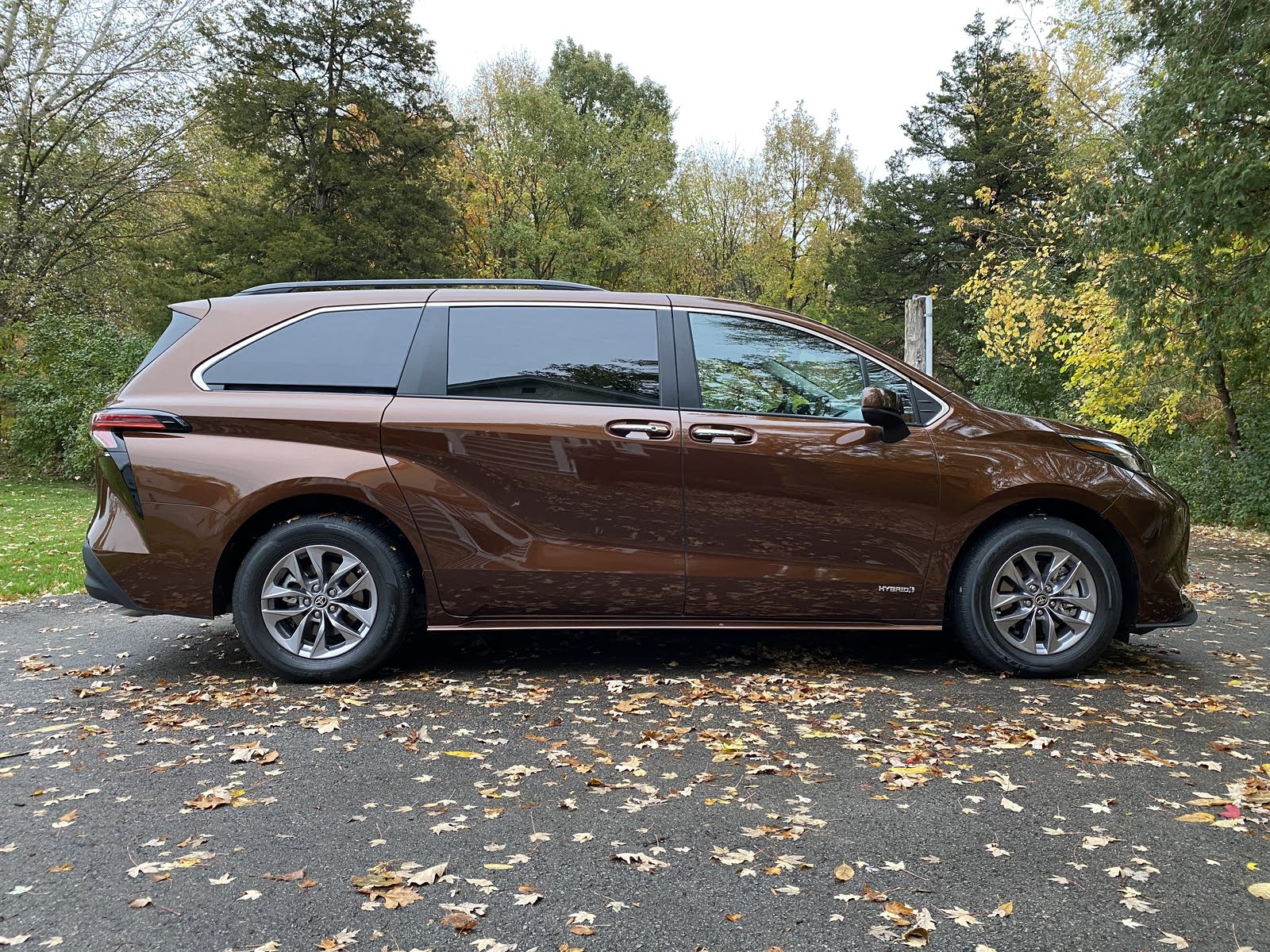
According to CarGurus experts, the overall rating for the 2021 Toyota Sienna is 8.3 out of 10, while the 2021 Toyota Highlander scores 7.5 out of 10. Given these ratings, the 2021 Toyota Sienna emerges as the stronger recommendation. Its superior cargo capacity, innovative hybrid technology, and family-friendly features make it an excellent choice for those needing a versatile and efficient vehicle. While the Highlander impresses with its style, luxury options, and safety features, the Sienna’s higher rating and practicality for family use set it apart.
Choose the 2021 Toyota Sienna if:
- You need substantial cargo space and passenger flexibility, with a sliding second-row that can accommodate up to 101 cubic feet of cargo.
- An impressive fuel economy is crucial, with the hybrid system achieving up to 36 mpg combined.
- You prioritize a suite of family-friendly features, such as power-operated sliding doors and a rear tailgate, abundant cupholders, and a versatile interior layout.
Choose the 2021 Toyota Highlander if:
- You prefer the aesthetic and style of a midsize SUV with a sleek and distinct design.
- A balance between luxury and practicality is important, with options for a sophisticated interior and modern technology.
- You seek advanced safety features with high safety ratings, including Toyota Safety Sense 2.5+ and a Top Safety Pick+ designation from IIHS.
CarGurus highlights

According to CarGurus experts, the overall rating for the 2021 Toyota Sienna is 8.3 out of 10, while the 2021 Toyota Highlander scores 7.5 out of 10. Given these ratings, the 2021 Toyota Sienna emerges as the stronger recommendation. Its superior cargo capacity, innovative hybrid technology, and family-friendly features make it an excellent choice for those needing a versatile and efficient vehicle. While the Highlander impresses with its style, luxury options, and safety features, the Sienna’s higher rating and practicality for family use set it apart.
Choose the 2021 Toyota Sienna if:
Shop Now- You need substantial cargo space and passenger flexibility, with a sliding second-row that can accommodate up to 101 cubic feet of cargo.
- An impressive fuel economy is crucial, with the hybrid system achieving up to 36 mpg combined.
- You prioritize a suite of family-friendly features, such as power-operated sliding doors and a rear tailgate, abundant cupholders, and a versatile interior layout.
Choose the 2021 Toyota Highlander if:
Shop Now- You prefer the aesthetic and style of a midsize SUV with a sleek and distinct design.
- A balance between luxury and practicality is important, with options for a sophisticated interior and modern technology.
- You seek advanced safety features with high safety ratings, including Toyota Safety Sense 2.5+ and a Top Safety Pick+ designation from IIHS.

By: CarGurus + AI
At CarGurus, our team of experienced automotive writers remain at the heart of our content operation, conducting hands-on car tests and writing insightful guides that are backed by years of industry experience. To complement this, we are harnessing AI to make our content offering more diverse and more helpful to shoppers than ever. To achieve this, our AI systems are based exclusively on CarGurus content, ratings and data, so that what we produce is both unique to CarGurus, and uniquely helpful to car shoppers.
